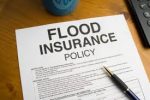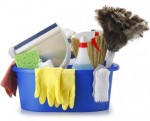7 Legal Tasks to Do When You Move

The Internet is full of checklists and resources to use if you are planning to move. There are packing timelines. There are lists of packing supplies. There are even directions on how to pack boxes.
But moving is much more than purging and organizing your personal affects. There are legal tasks you need to take care of too.
Here are 5 legal tasks to complete when you move:
- Read your leases: Review your current lease to make sure you will not get into trouble for leaving. You are responsible for paying rent for the entire lease term, even if you have vacated the premises. If you need to move before the lease term is expired, read the lease to see if you can sublet or assign to a new tenant. Check your new lease for these terms before you sign it. And make sure you complete these tasks to protect your rights as a tenant.
- Protect yourself with insurance: Thoroughly read any contract with a moving company before you sign it for delivery times and insurance coverage. Moving companies are required to provide some moving insurance. But you may wish to purchase more. You should also consider renter’s insurance or homeowner’s insurance.
- Notify your creditors: Update your address with all of your creditors to ensure you do not miss a payment. And be sure to complete a change of address with the United States Postal Service and request that your mail be forwarded to your new address.
- Keep receipts if you are relocating for a job: You may be able to write off your expenses if you are required to relocate more than 50 miles due to a job change. Review the Internal Revenue Service’s requirements to qualify for this tax break.
- Update your estate plan: State laws governing wills and estate plans differ. If you move to a different state, update your estate plan.
- Register your vehicles:If you’ve moved states, provinces or countries, register your car and get a new driver’s license, tags and/or plates for your vehicles. Check your local DMV for more information.
- Register to Vote: Again, if you’ve moved cities, it’s important to make sure you’re on the voter’s registration for your local area. You should also make sure you’ve updated all important files and documents with your new address.







 These are a list of some of the things that need to be done around the house, and spring is a great time to do them. So often we don’t remember to do them, so let this be your wake-up call!
These are a list of some of the things that need to be done around the house, and spring is a great time to do them. So often we don’t remember to do them, so let this be your wake-up call!







 Kim N. Bregman
Kim N. Bregman